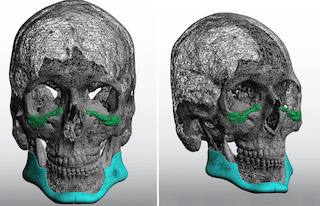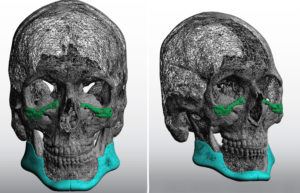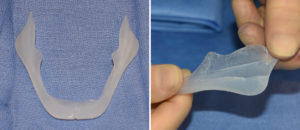Background: Augmenting the entire jawline in a smooth and continuous fashion provides the most comprehensive and significant result in lower facial reshaping. It bypasses anything standard chin and jaw angle implants can do with their three corner spot augmentation approach. This effect is more than just about dimensions and as much about surface coverage.
While the custom jawline implants have some obvious and serious aesthetic advantages when seen in designs on 3D CT scans, what is not obvious and just as important is how is it going to be placed. It is one thing to look at it on a skeletal model but such large implants are unprecedented when it comes to surgical insertion and placement. Despite what they can aesthetically do unattractive large incisions/scars or high risks of permanent nerve injuries are not acceptable.
The key to such implant placement is two-fold; three small incisions and the flexibility of the implant to pass through them. For men it is almost always preferred to have a small submental skin incision combined with intraoral incisions. Ideally the implant can be passed through the external skin incision and positioned at the jaw angles through the intraoral incisions. Because the implant can only be partially seen in limited amounts through the incisions, ensuring its placement on the bone as desired requires aids built into the design to do so.
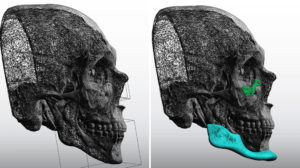
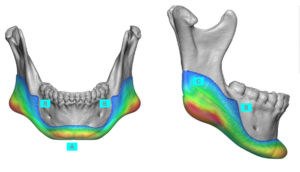
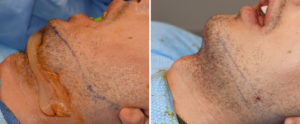
Once inserted and positioned the implant is secured to the bone with 2 screws at each triangle point. (chin and jaw angles) In many patients the immediate effect on the chin area can be appreciated.
Case Highlights:
1) Custom jawline implants have numerous elements incorporated into their design that aids in their surgical placement through limited incisions.
2) In men the submental skin approach allows small to moderate sized implants to be introduced and safely passed under the mental nerves.
3) One-piece or intact implant placement is always one of the primary surgical goals if possible.
Dr. Barry Eppley
Indianapolis, Indiana

